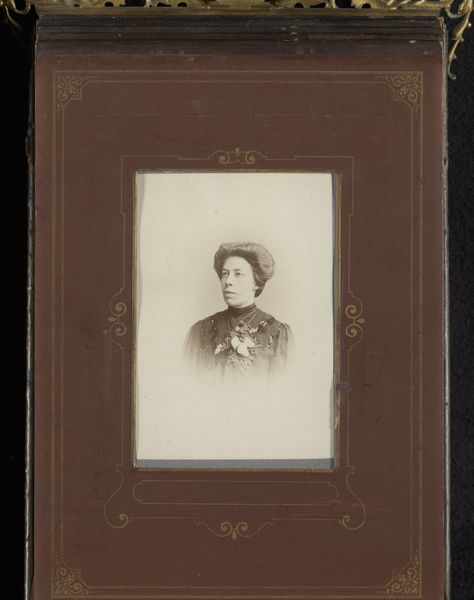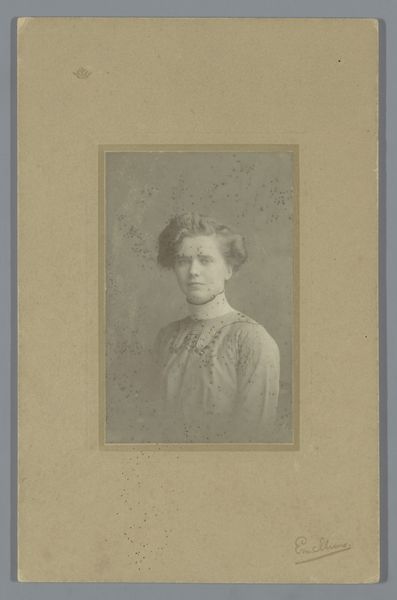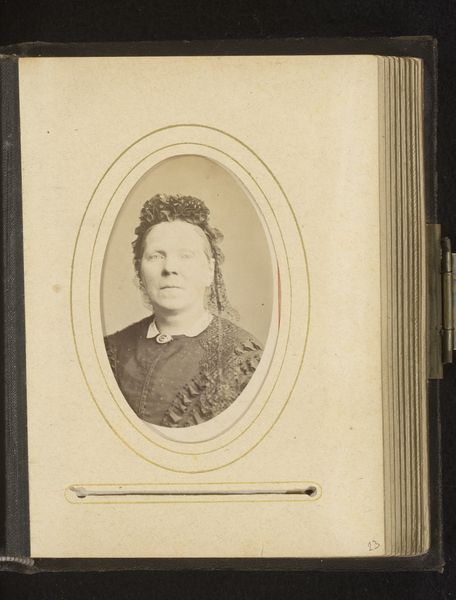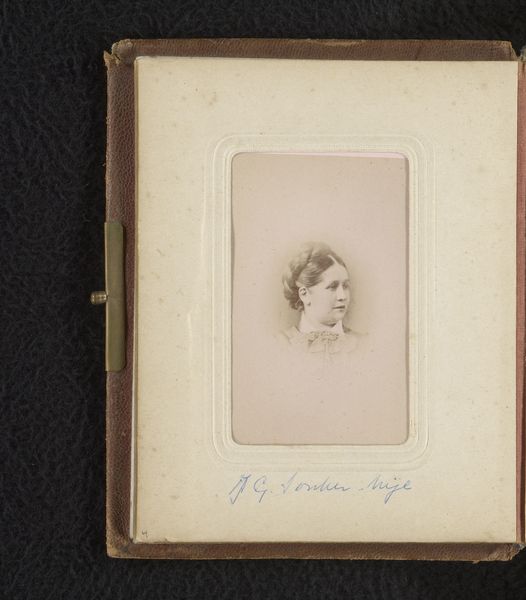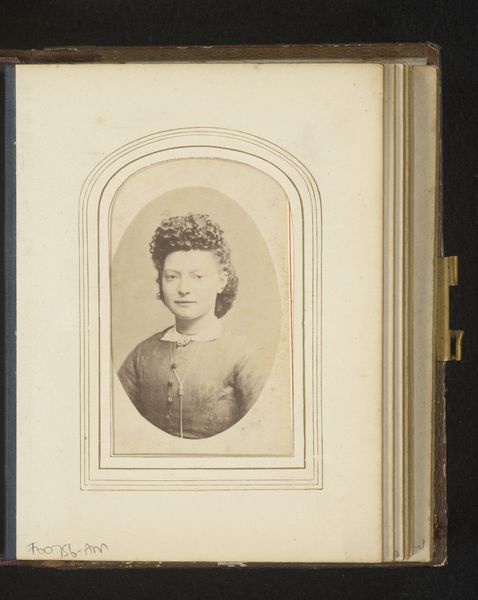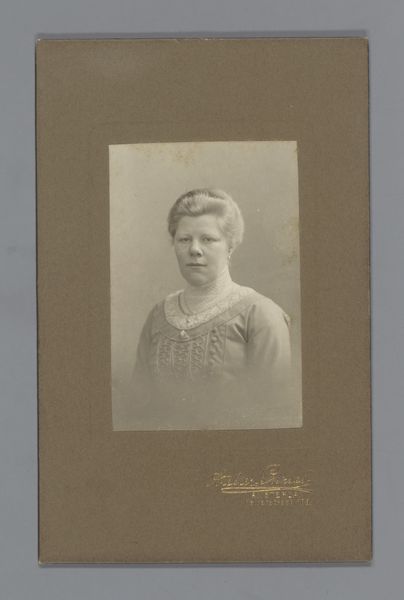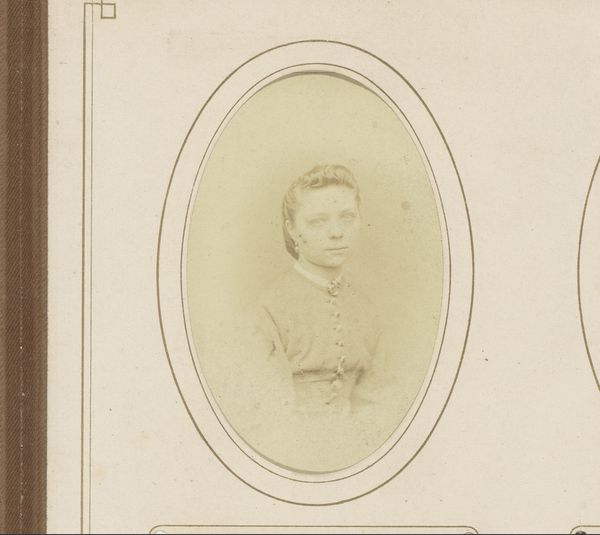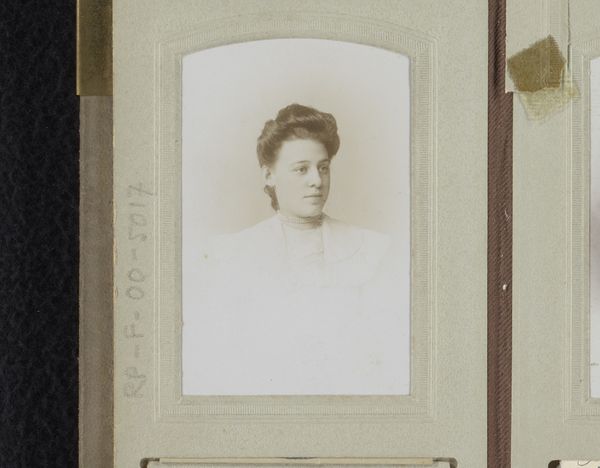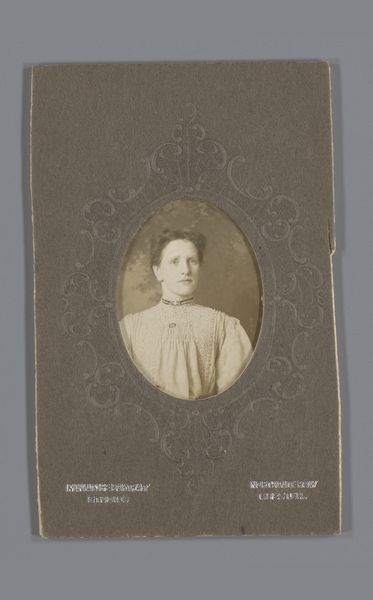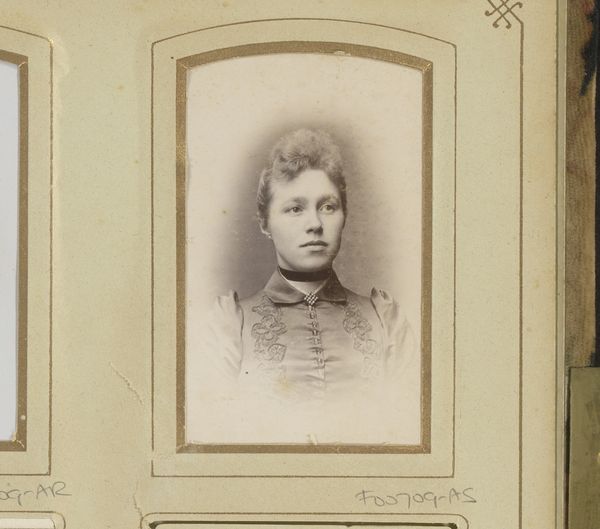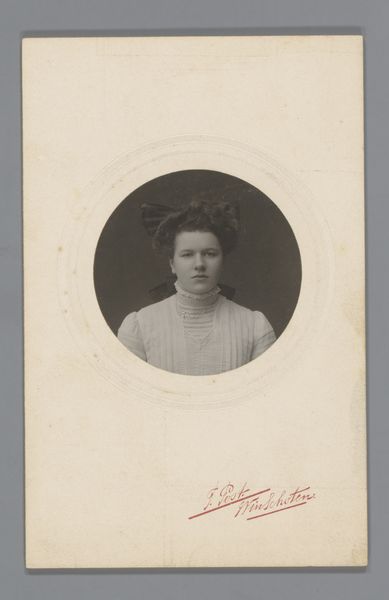
photography, albumen-print
#
portrait
#
figuration
#
photography
#
albumen-print
Dimensions: height 142 mm, width 93 mm
Copyright: Rijks Museum: Open Domain
Curator: Here we have "Portret van een vrouw," or "Portrait of a Woman," an albumen print that likely dates between 1880 and 1920, attributed to C.J. Saunter. Editor: My immediate reaction is one of quietude. It's a very still image, and the sepia tones lend a certain gravitas. The woman’s expression is difficult to read, which I find compelling. Curator: Absolutely. Photography in this period held a unique societal role, capturing and often idealizing individuals while simultaneously reflecting Victorian ideals of respectability and social standing. Albumen prints were particularly popular for their fine detail and glossy finish, fitting the era’s emphasis on visual precision. Editor: The woman's lace collar stands out—it’s quite intricate and luminous. Lace has historically symbolized status, purity, and even a certain delicacy. I wonder about the conscious decision to emphasize it so prominently in the portrait. Is it a personal statement, or a reflection of broader cultural ideals about women at the time? Curator: Both, I suspect. Consider the era; there were prescribed expectations of women in visual culture that frequently connected domestic virtue with social prominence. The sitter, like many in portraiture of this period, presents a carefully constructed identity. Her gaze, though direct, hints at restraint—perhaps a sign of the complex negotiation women were engaged in, balancing self-expression with societal expectations. Editor: The backdrop behind her is almost dreamlike. Its ambiguity makes her face all the more arresting. It almost invites the viewer to project their own interpretations of the woman and her life onto the image. Curator: A definite power to this ambiguity. It speaks volumes, I think, about how portraits during this period functioned within the broader social fabric—meant not only to capture likeness but to communicate idealized identities for public consumption and long after that as a legacy to time. Editor: Looking at it now, it feels like looking back into a silent but potent cultural mirror. There's more to learn from it than a simple recording of appearance. Curator: Exactly. It encourages us to remember the public role of the portrait as an idealized object during its time.
Comments
No comments
Be the first to comment and join the conversation on the ultimate creative platform.
